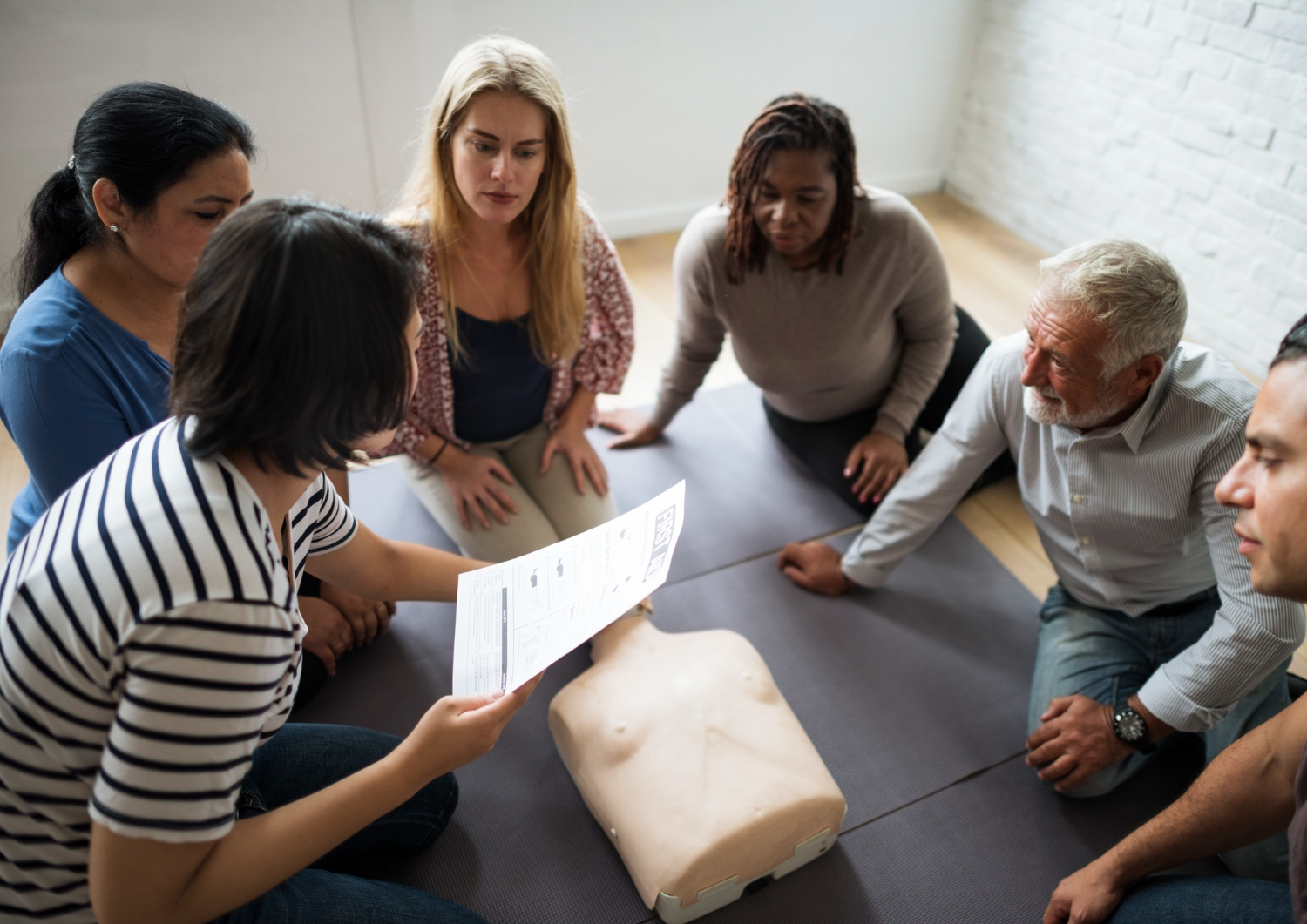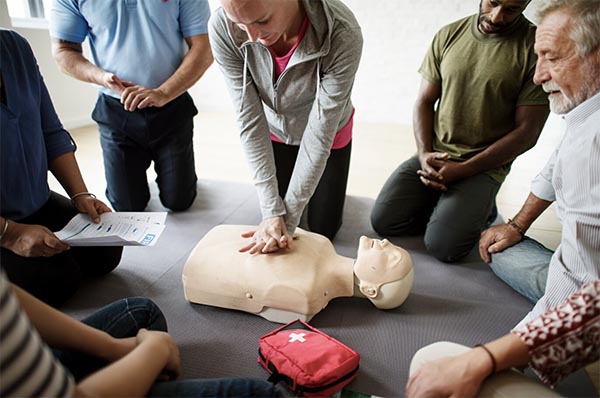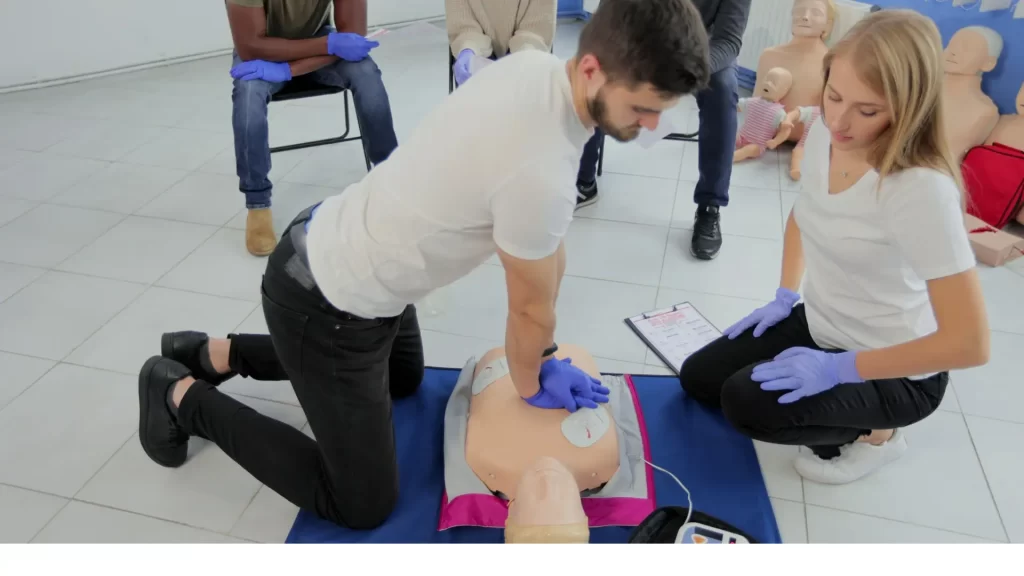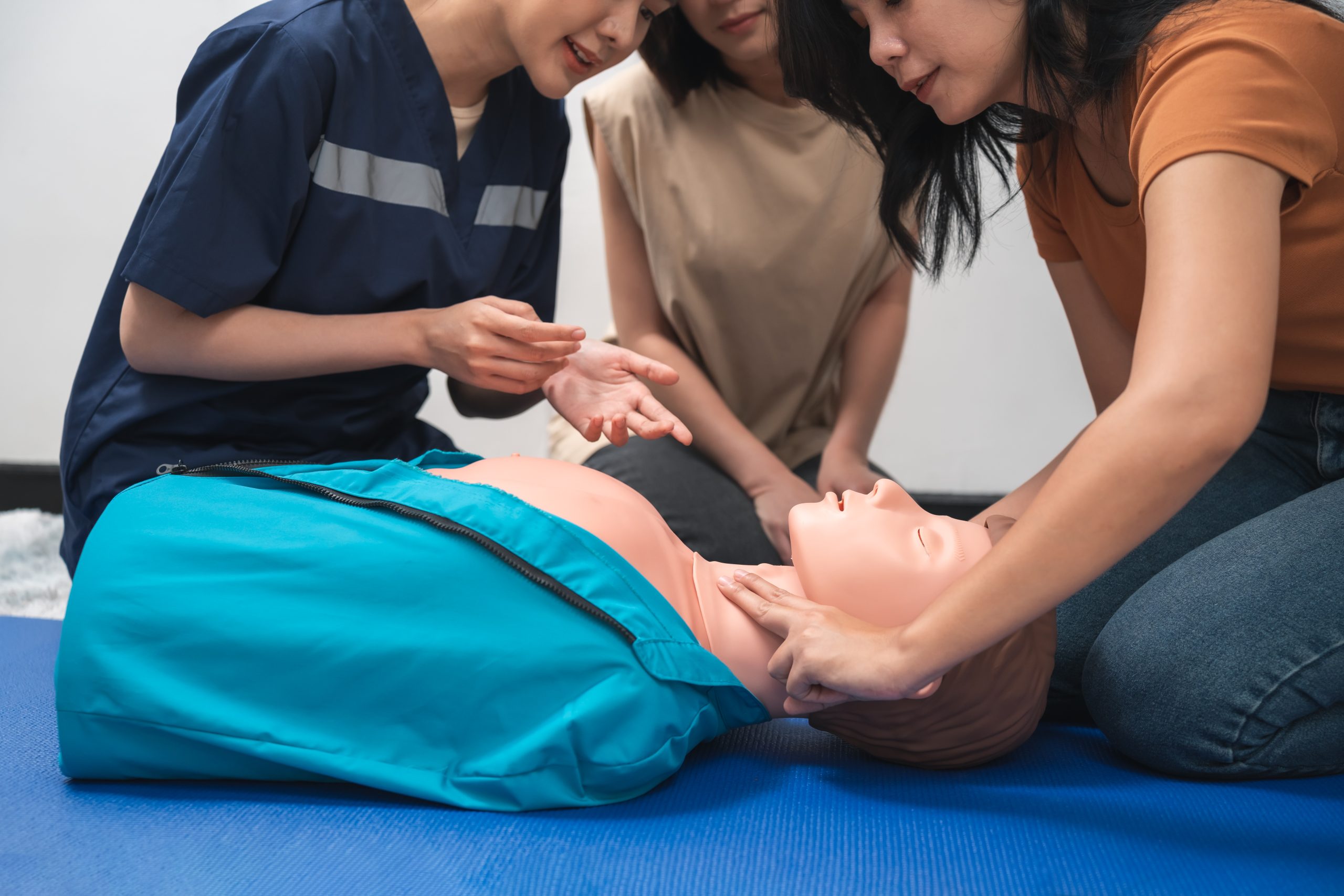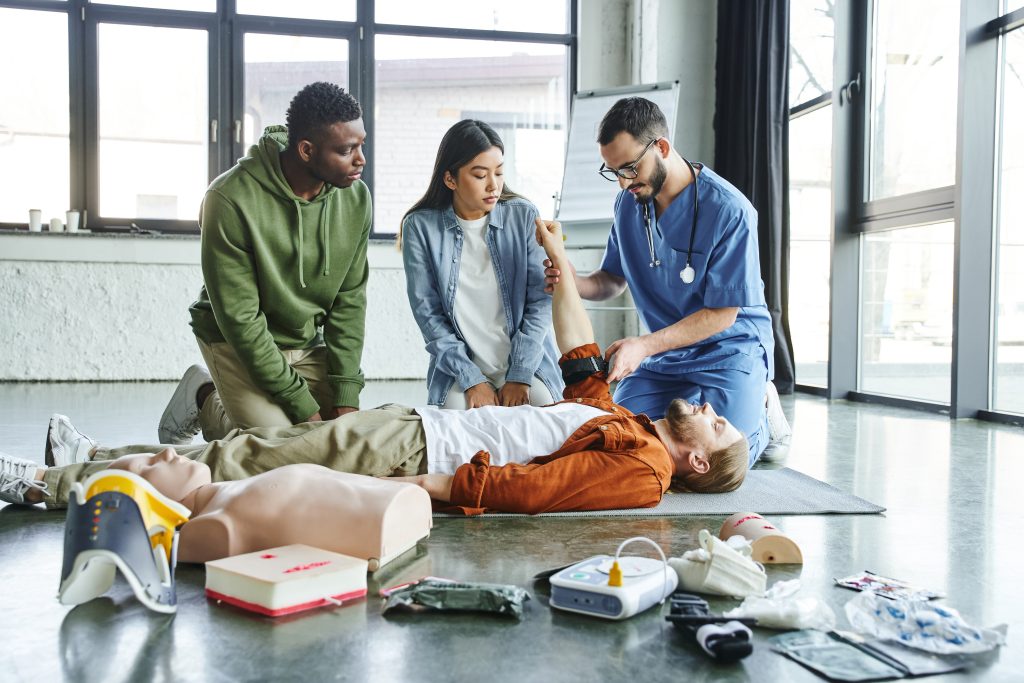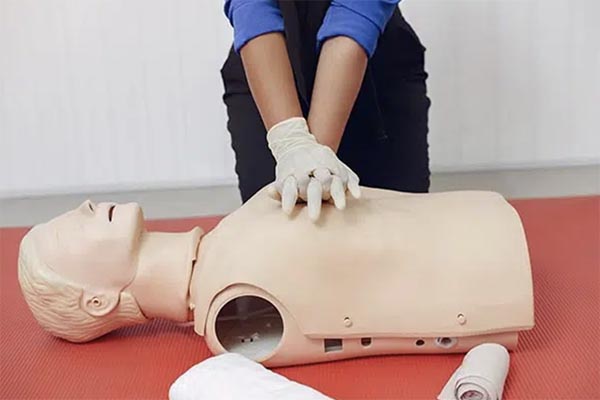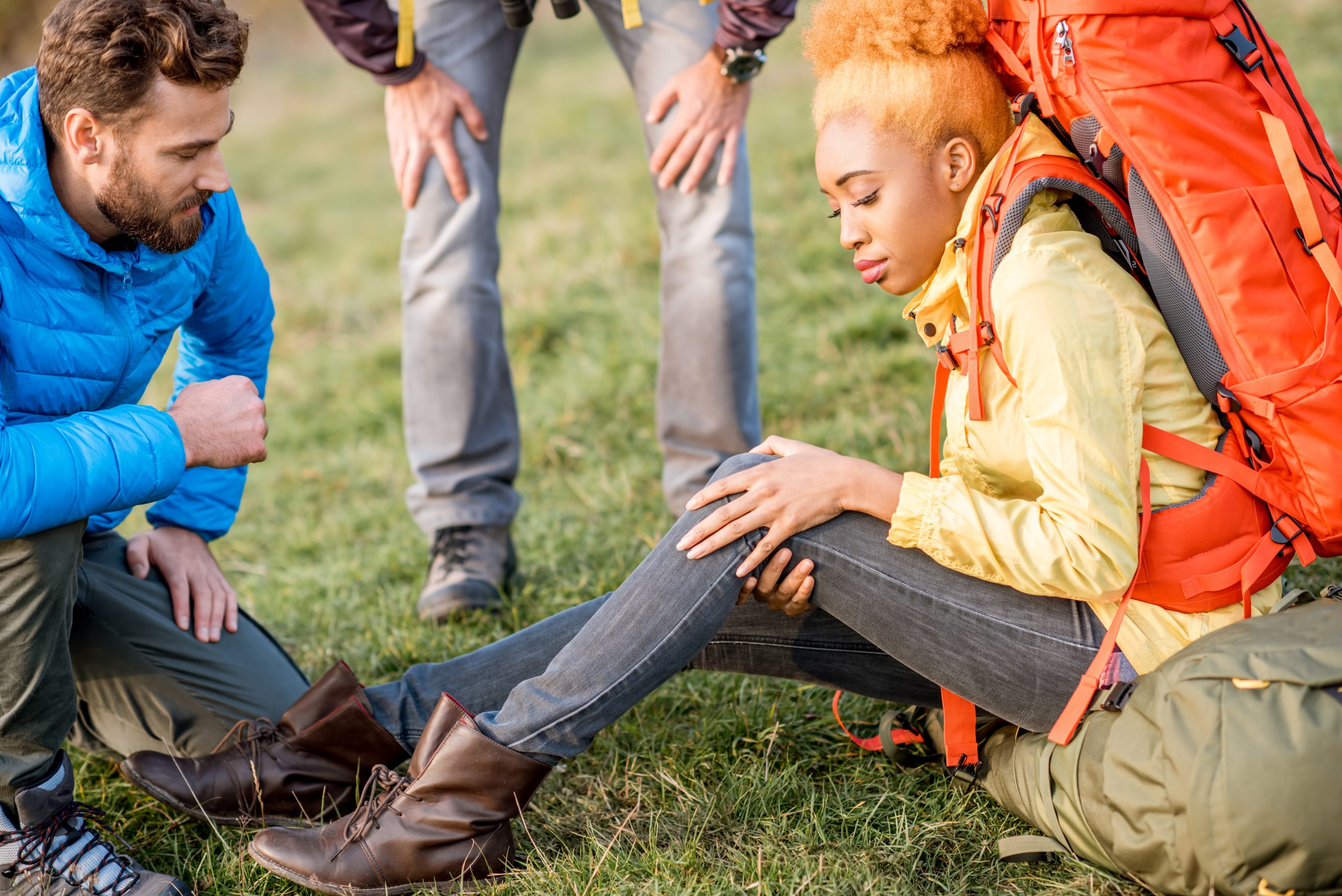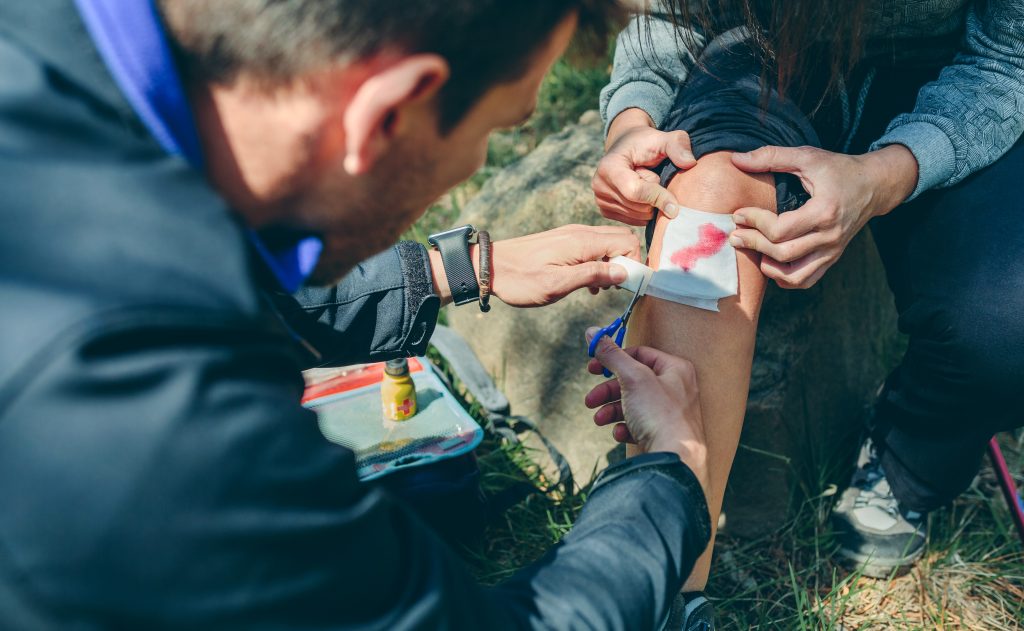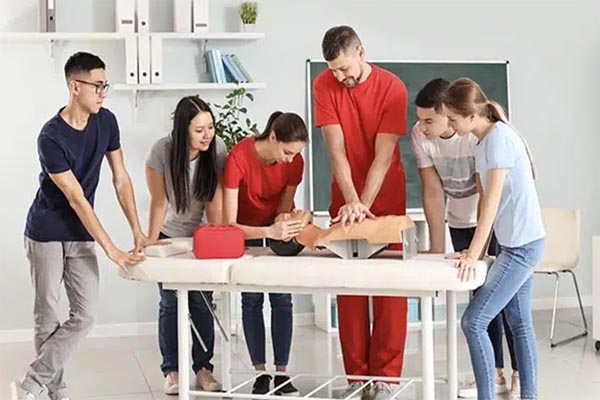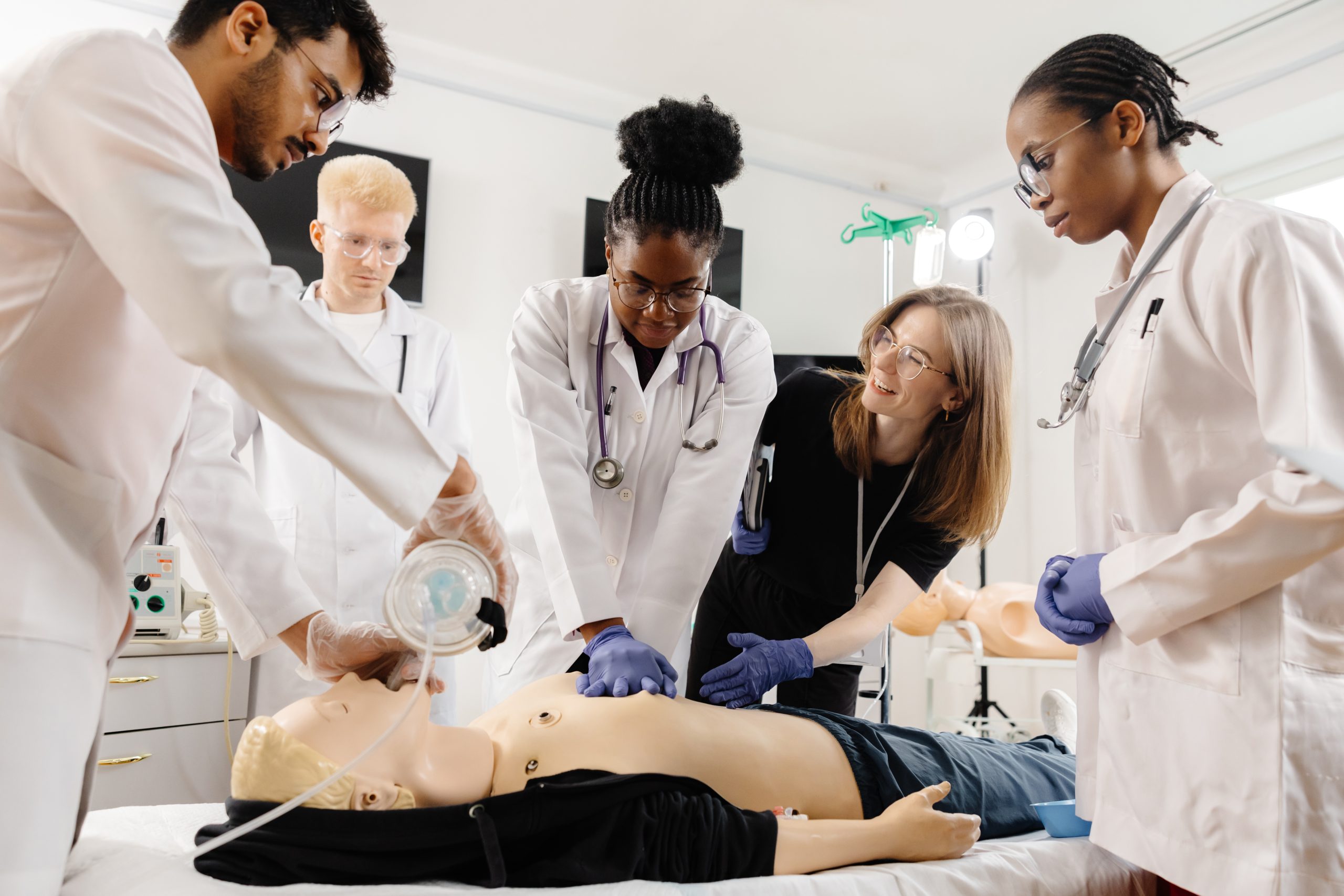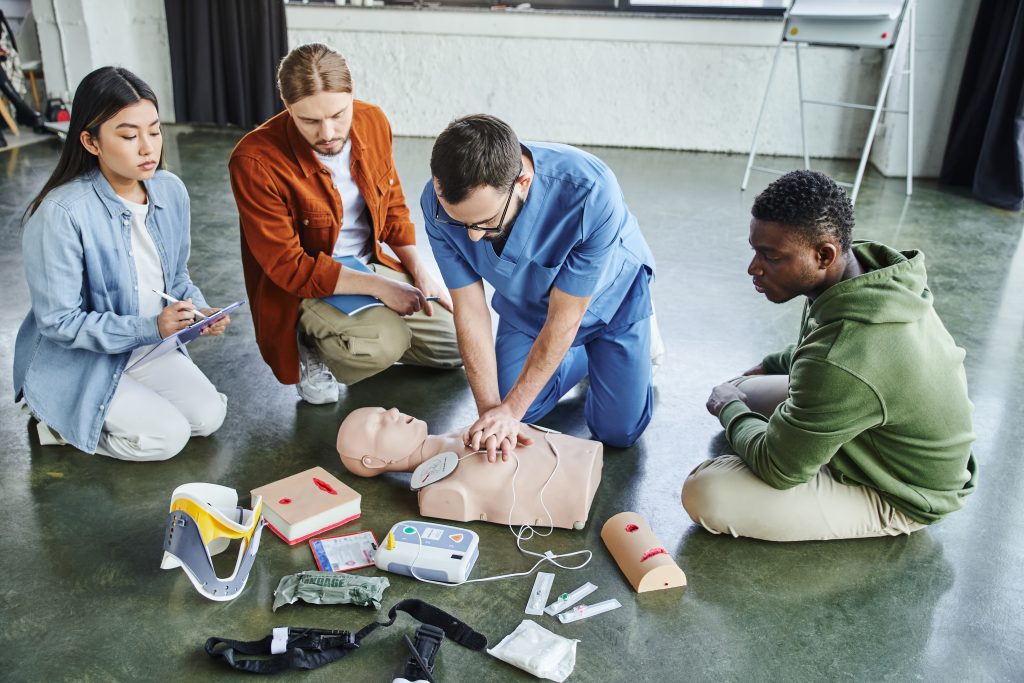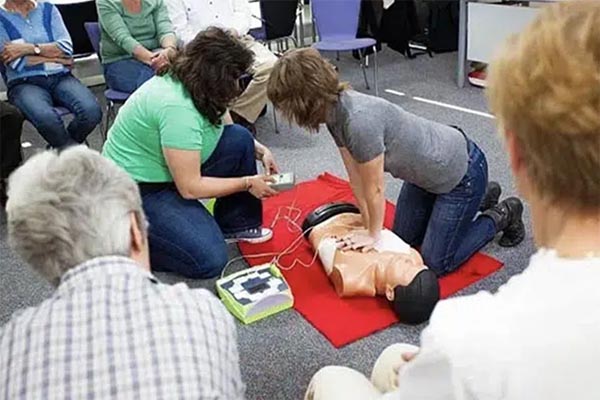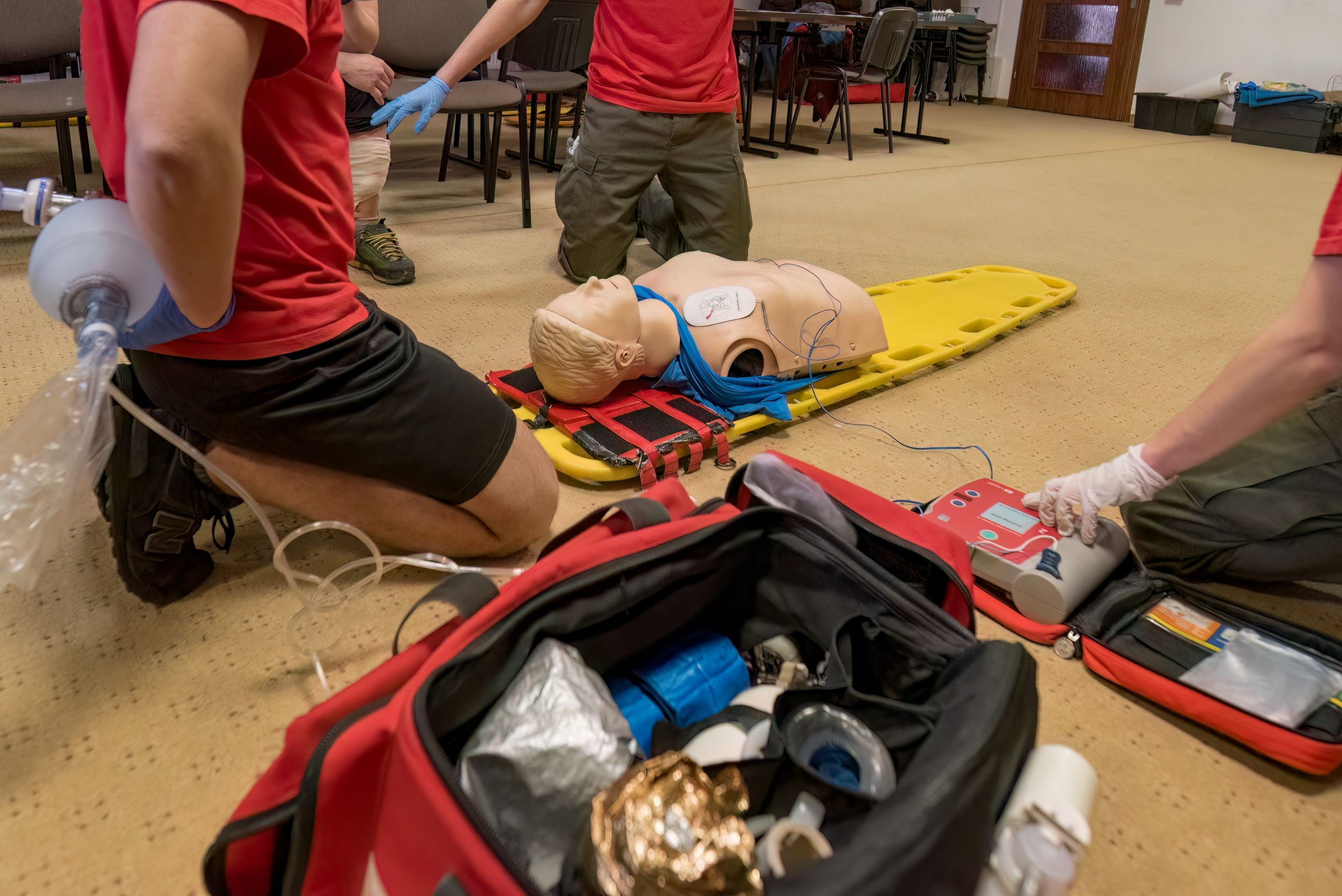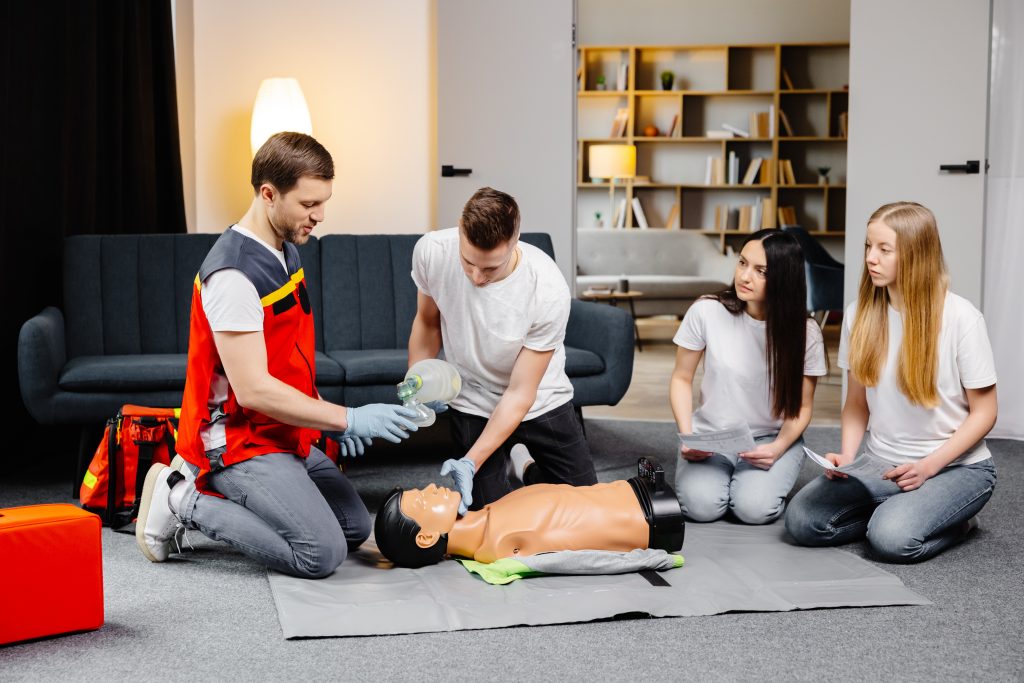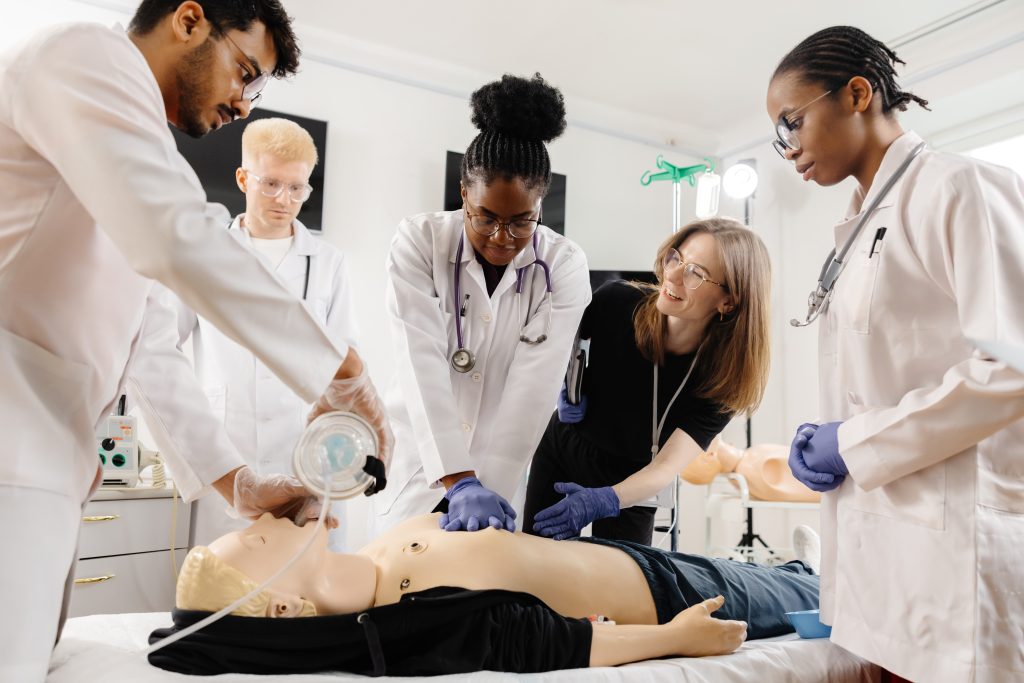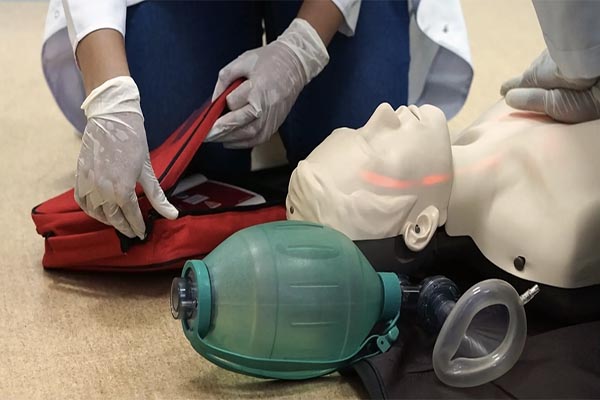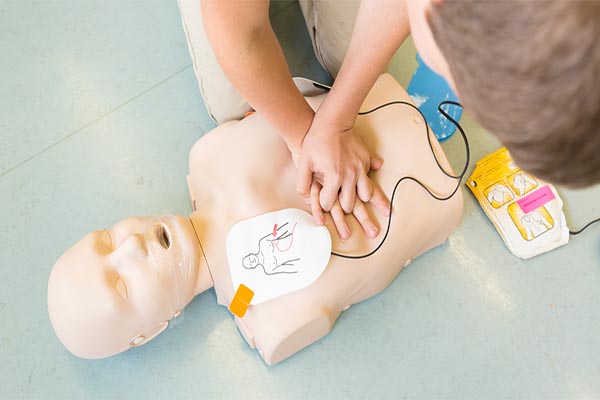The Importance of AED Training for D.C. Construction Sites

Construction work is a cornerstone of Washington D.C.’s development, with new projects constantly shaping the city’s skyline. While a dynamic industry, it also carries inherent risks. The daily environment on a construction site, filled with heavy machinery, electrical systems, and potential for falls, means that emergencies can happen at a moment’s notice. Among the most critical and time-sensitive of these emergencies is sudden cardiac arrest (SCA).
SCA can strike anyone, regardless of age or health, but the unique conditions on a construction site can make it a higher risk. Electrocutions, for instance, are a known hazard that can trigger an SCA. The immediate response to an SCA is vital. Without intervention, a person’s chances of survival decrease by 7 to 10 percent for every minute that passes. This is where an Automated External Defibrillator (AED) and proper training become not just a safety measure, but a critical, life-saving tool.
Why is an AED on a Washington D.C. Construction Site Not Just a Good Idea, But a Necessity?
A construction site is a high-risk environment. Workers operate heavy machinery, deal with powerful electrical systems, and perform tasks at heights. These factors increase the potential for accidents that can lead to sudden cardiac arrest (SCA). SCA occurs when the heart’s electrical system malfunctions, causing it to stop beating effectively. In this situation, the person collapses and becomes unresponsive. Every second counts.
An AED is the only definitive treatment for SCA. It is a portable, user-friendly device designed to analyze a person’s heart rhythm. If it detects a problem, it will deliver a controlled electrical shock to restore a normal heartbeat. The AED’s purpose is to reset the heart’s electrical system, effectively bringing it back to life. Having an AED readily available on a D.C. construction site means that a worker suffering an SCA can receive this life-saving treatment within minutes, not minutes-to-hours.
The time it takes for emergency services to arrive can be critical. On a bustling Washington D.C. construction site, access can be a challenge. Delays due to traffic, site access points, or complex layouts can all prolong the time until professional help arrives. An on-site AED bypasses these delays entirely. It allows a trained colleague to act as an immediate first responder. This immediate action can be the difference between life and death.
The presence of an AED also fosters a culture of safety. It shows that a company is serious about protecting its most valuable asset: its employees. This commitment to safety can boost morale and create a more secure work environment. When workers know that the necessary tools are available to help them in an emergency, they can feel more confident and focused on their jobs. This is a crucial element for any successful project in the nation’s capital.
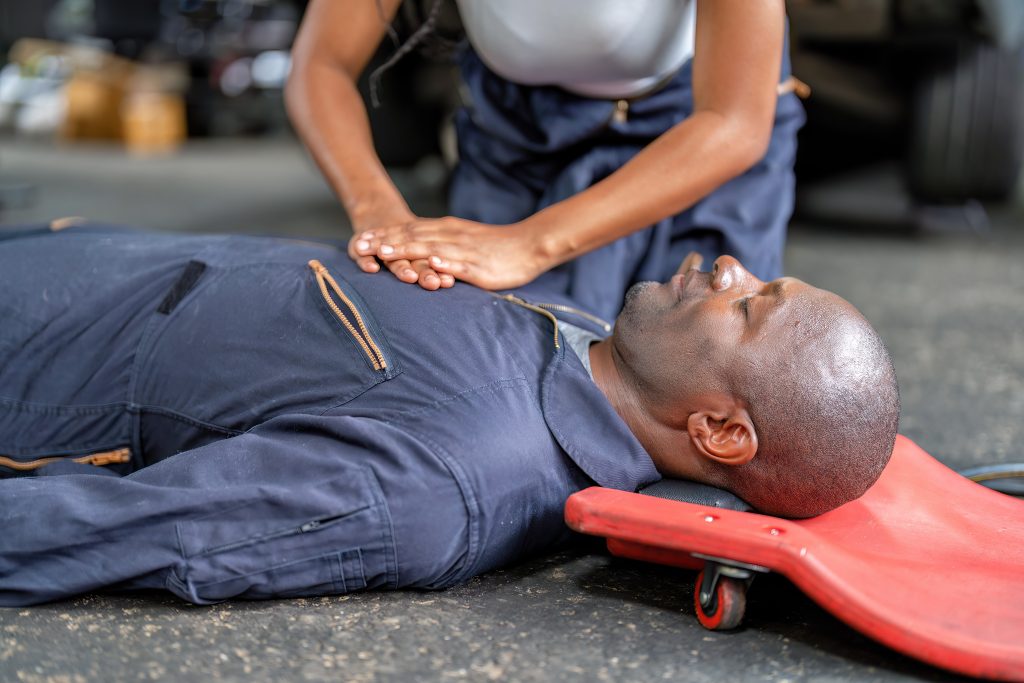
How Does AED Training Complement On-Site Emergency Protocols?
AED training is a vital component of any comprehensive emergency preparedness plan for a construction site. While having the device is essential, a team that knows how to use it is even more critical. The training provided by certified instructors goes beyond simply knowing where the AED is located. It teaches workers how to recognize the signs of sudden cardiac arrest.
The training emphasizes a clear, step-by-step process. This includes:
- Checking for responsiveness: Tapping the person and shouting to see if they respond.
- Calling for help: Immediately dialing 911 and designating a specific person to find the AED.
- Beginning CPR: Starting chest compressions and rescue breaths to keep blood flowing.
- Applying the AED: Attaching the AED pads to the person’s chest and following the voice prompts.
This systematic approach ensures that the response to an emergency is organized and effective. Training provides the hands-on practice needed to feel confident in a high-stress situation. Trainees learn how to correctly place the pads, how to follow the voice prompts, and when to deliver a shock. They also learn how to continue CPR after the shock has been delivered, if necessary.
The training also addresses the psychological aspect of an emergency. It helps to alleviate the fear of a “fight-or-flight” response. When a worker has been trained and has practiced these skills, they are more likely to act quickly and decisively. They will know exactly what to do and will not hesitate. This kind of preparation is invaluable on a construction site.
Furthermore, certified training ensures that the skills are up-to-date and in line with the latest guidelines from organizations like the American Heart Association (AHA). This is crucial because emergency protocols can evolve. Regular refresher courses ensure that the entire team remains prepared and ready to act. For a D.C. construction company, this means peace of mind knowing their team is equipped with the best possible life-saving skills.
What are the Key Components of an Effective AED and CPR Training Program for Construction Workers?
An effective training program for a high-risk environment like a construction site must be comprehensive and practical. It should cover not only the technical aspects of CPR and AED use but also the specific challenges of the work environment. The training should be hands-on and scenario-based.
Key components include:
- Adult, Child, and Infant Training: While the focus for construction sites is primarily on adults, a comprehensive course will cover all age groups. This ensures that workers are prepared for any situation, whether on the job or in their personal lives.
- Hands-on Practice: The most crucial element of any training is the opportunity for hands-on practice. Trainees should practice chest compressions on manikins and simulate the use of an AED machine. This muscle memory is invaluable in a real emergency.
- Choking Management: The training should include techniques for managing choking in adults. This is a critical skill for any workplace, including construction sites where food or other objects could cause an airway obstruction.
- Recognition of SCA Symptoms: Before any intervention can occur, a worker must be able to recognize that an SCA is happening. The training should teach them to look for signs like unresponsiveness and the absence of normal breathing.
- Group Certification Options: A training provider that offers group certification and on-site training is ideal for construction companies. This allows the entire team to be certified together without having to leave the worksite. It is a time-efficient and cost-effective solution.
- Certification Validity and Renewal: The training program should provide a clear timeline for certification validity, typically two years. They should also offer renewal courses. This ensures that the skills remain current and the team stays compliant with safety standards.
An effective training program is not about memorizing facts. It’s about developing practical skills that can be deployed under pressure. It’s about building a team of confident, capable first responders from within the workforce. For Washington D.C.’s construction industry, this kind of training is a smart investment in safety and preparedness.
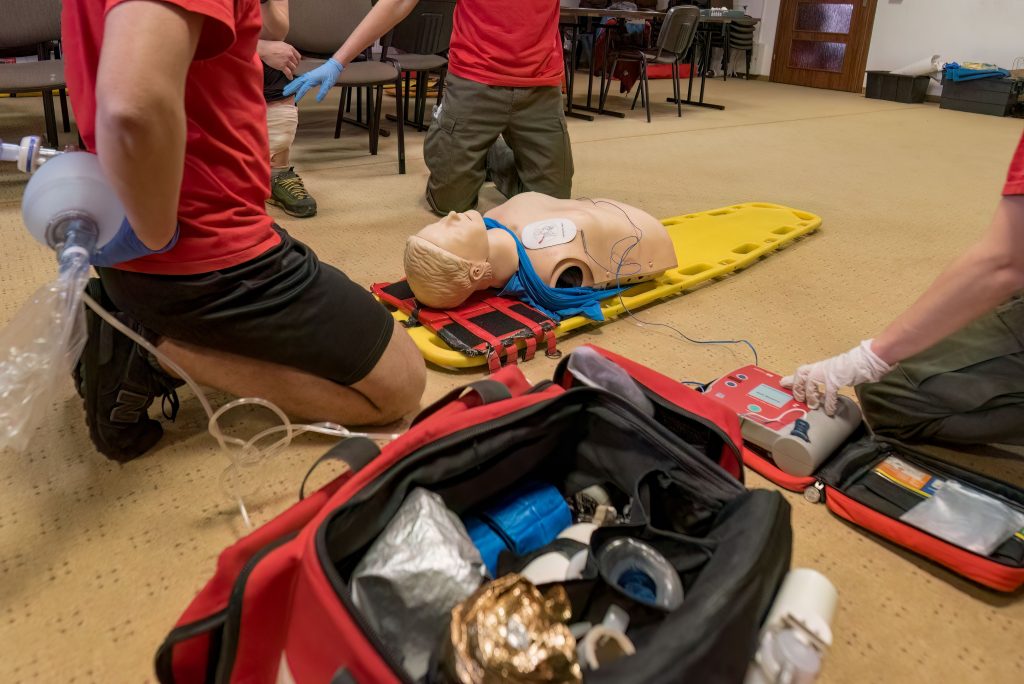
How Does a Comprehensive Safety Plan Impact Project Timelines and Success?
A proactive approach to safety, including on-site AEDs and trained personnel, is a cornerstone of project success. While some might view safety measures as an added cost or a delay, the reality is that they save time and resources in the long run. A severe injury or death on a construction site can have catastrophic consequences for a project.
The direct impacts of a medical emergency include:
- Work Stoppage: An emergency will almost certainly halt work on the site. This can lead to delays in project completion, which can be very costly.
- OSHA and Regulatory Investigations: A serious incident on a D.C. construction site will trigger an investigation by regulatory bodies like OSHA. This process can be long and disruptive, potentially leading to fines and further work stoppages.
- Increased Insurance Premiums: A history of workplace accidents will lead to higher insurance rates for the company.
- Reputation Damage: A company’s reputation for safety is a key factor in winning future contracts. A poor safety record can make it difficult to secure new business in a competitive market like Washington D.C.
- Litigation: A death or serious injury can lead to costly and time-consuming lawsuits.
By contrast, a company that invests in comprehensive safety training, including AEDs and CPR, reduces these risks. They can respond to an emergency with confidence and competence. The quick actions of a trained colleague can stabilize a situation until professional help arrives. This minimizes disruption to the worksite. It also shows a clear commitment to safety, which can improve the company’s reputation and make them more attractive to clients.
Ultimately, investing in AED training is an investment in efficiency and reliability. A safer worksite is a more productive worksite. When workers feel safe and protected, they are more focused and motivated. This leads to higher quality work and a more streamlined project timeline. In Washington D.C., where projects are often under intense scrutiny, this can be a key competitive advantage.
Conclusion
The risks on a Washington D.C. construction site are real and constant. While safety protocols are in place, the unpredictable nature of medical emergencies like sudden cardiac arrest requires an extra layer of protection. That layer is provided by a readily available Automated External Defibrillator and a team trained to use it. AED training and CPR are not just optional skills; they are essential life-saving tools.
By equipping construction workers with these skills, companies in the D.C. area can transform their teams into a community of first responders. This investment in training can mean the difference between life and death. It can also protect a company from the financial and reputational damage that an emergency can cause. If you are a construction company or an individual worker in Washington D.C., now is the time to get certified.
To learn more about on-site group training or to get your individual certification, contact CPR Classes Near Me today.
FAQs about AED Training for Construction Sites in Washington D.C.
Q: What is the difference between a heart attack and sudden cardiac arrest?
A: A heart attack is a “circulation” problem. It occurs when blood flow to a part of the heart is blocked. The person is usually awake and conscious. Sudden cardiac arrest (SCA), however, is an “electrical” problem. It is caused by an electrical malfunction in the heart that stops it from pumping blood. The person collapses and becomes unresponsive. An AED is used to treat SCA, but not a heart attack.
Q: How long is an AED and CPR certification valid?
A: The American Heart Association (AHA) certifications for CPR and AED are typically valid for two years. After this period, it is important to take a renewal course to refresh your skills and stay up-to-date with the latest guidelines and protocols. This is critical for ensuring that you are always ready to act in an emergency.
Q: How difficult is it to learn how to use an AED?
A: Learning to use an AED is not difficult. The devices are designed to be user-friendly, with clear voice prompts and visual instructions that guide the user through the process. The training focuses on teaching the steps to follow, from turning on the device to attaching the pads and delivering a shock. The hands-on practice in the course makes the process second nature.
Q: Can a bystander get in trouble for using an AED on someone?
A: In the United States, most states have “Good Samaritan” laws that protect individuals from liability when they provide emergency medical care, including using an AED, in good faith. These laws are designed to encourage bystanders to act and help save lives without fear of legal consequences. It is always best to check the specific laws in your area, but generally, you are protected.
Q: Does an AED course include CPR training?
A: Yes, an AED course is almost always integrated with CPR training. The two skills are designed to work together to increase the chances of survival for a person experiencing sudden cardiac arrest. CPR helps to circulate oxygenated blood until an AED is available to deliver a shock, and it continues to be important after the shock to maintain blood flow until professional help arrives.

